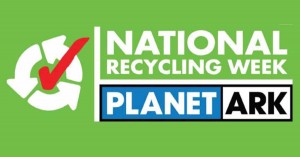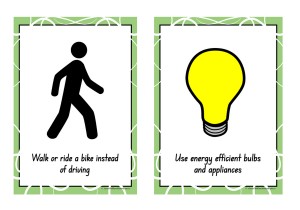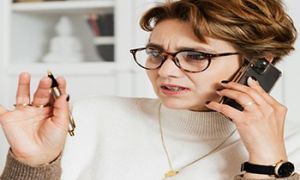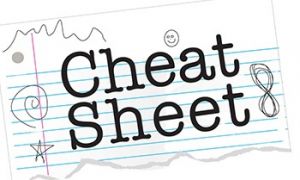Food waste is an unpalatable truth in many early childhood services. . It is not just a waste of resources but actively contributes to climate change. The following article provides information on Planning It Right, Creating A Positive Environment, Using Leftovers and more.
Plan It Right
The most common reason for food waste is not getting the menu right. It is possible that your service has too little time to plan the menu properly and as a result, ends up preparing more food that can be consumed. Set aside time for menu planning as part of your service schedule and not something to be squeezed in at the eleventh hour. Ensure that your weekly menu is for the exact number of children attending your centre. Check out menu planning guidelines based on the Australian Dietary Guidelines so that meet regulatory standards and are consistent with the recommendations in the Australian Government’s Get Up & Grow: Healthy Eating and Physical Activity for Early Childhood. Essentially the guidelines specify the minimum number of children serves from each food group that should be provided to 1–5-year-old children each day in long day care. The guidelines also contain recommendations for feeding infants under 12 months of age.
Make sure you’re meeting the amount of food required per child. You can use like FoodChecker or other online tools to provide you with information on children’s portion sizes and ingredient quantity planning. Moreover, such resources usually have pre-loaded recipes that meet nutritional requirements and are tasty enough to appeal to children.
Once you have chalked out your menu, make a shopping list so that at the store, your purchases are limited only to the types and quantities of food required for your centre menu. This will not only reduce food waste but ultimately save you time and money as well.
Other ideas include:
- Consider more frequent ordering of smaller quantities of fresh produce to minimise spoilage.
- Use compost bins or large in-vessel composters to process food organics on site. This not only reduces the volume of waste but also creates a useful soil enhancer (compost).
- Use worm farms (or vermiculture systems) as a fun way for children to get involved in ‘recycling’ their organic fruit and vegetable scraps.
- Create a vegetable garden and use the compost, worm liquid or worm castings to enhance the soil.
- Organise for food waste to be collected by a commercial contractor for transport to a processing facility.
Create A Positive Environment
Unhealthy eating practices among children are another major reason for food waste. Create an environment that encourages children to eat mindfully so that they take only what they can consume. One way to do this is to practice ‘Family style serving' in which food is placed in the middle of the table for children to serve themselves and everyone, including the educator, eats together. This lets older children have more agency in their eating practices while allowing educators to help serve young children and model healthy eating practices at the same time. Additionally, the family-style serving gives children the opportunity to practice motor skills and balance at the meal table.
No matter which style of serving you practice at your centre, allow children to decide how much to serve themselves. Let them know that they can always come back for seconds, so they don’t need to overfill their plates at first. This may help to reduce plate waste from children not finishing their meals. Also when serving meals with new or unfamiliar ingredients incorporate familiar or favourite foods to encourage acceptance and minimise waste.
When eating with children, talk about healthy food choices, nutrition in age-appropriate language and exploring new foods. It is important to engage children in a fun, supportive way if they are to imbibe healthy eating practices in the long run.
Using Leftovers
No matter how minutely you plan a menu, it is always possible that you end up with leftovers. But instead of letting it all go to waste, here is how you can use up leftovers in safe, healthy ways.
- If you have leftover vegetables on your hands, use them up in soups and casseroles the next day.
- Extra vegetables can also be grated or cut into small pieces and frozen to use later in savoury muffins, casseroles or soups.
- Making smoothies is a popular way to use up leftover fruits but did you know, that the same can be done for leftover veggies too? Spinach, cauliflower and zucchini are some veggies that are perfectly happy to go into a smoothie – in fact, frozen fruits and veggies also give smoothies a thicker, creamier consistency.
- Yet another reason to make smoothies can be to use up milk or yoghurt before they pass their use-by date.
Freezing
Freezing leftovers is a great way to save food for another time and prevent it from ending up as waste. This is because at temperatures less than 5°C, many bacteria that cause food poisoning and food spoilage either don’t grow or their growth may be slowed down.
- Bread can be kept in the freezer and used again for toast; applesauce can taste just like fresh when you pull it from the freezer and even eggs can be frozen, either gently whisked and stored in a freezer-friendly container or separated and poured into ice cube trays. Apart from meats, fish and poultry, most vegetables and fruits can also be frozen when prepped up correctly.
- When freezing leftover food, avoid freezing large amounts at a time as it will take longer to freeze and defrost – all making more opportunities for bacteria to multiply. It’s better to split it into smaller quantities in separate containers so that you can defrost only the quantity you need.
- When freezing cooked food or leftovers, the most important thing is to cool them quickly. Cool food on the bench only until it stops steaming. Then place the hot food directly into the container, cover it with a lid and put it in the freezer.
- Remember though that there is a limit to how long food can be refrigerated as it will eventually spoil and deteriorate in both quality and nutrient value. If you have a freezer/fridge combination, you can store frozen products for up to six weeks without any major quality effects. Since a chest freezer usually operates at minus 18°C, food can be stored for around three months depending on the fat content. The higher the fat content the shorter the shelf life. Your freezer manufacturer usually lists recommended storage times for different types of food on the door or lid of your freezer. It is good practice to mark food containers with the type of food – like Meat or Veg - along with the date on which they are put in the freezer.
Storing
Storing food correctly can help reduce waste to a great extent. However, it's important to follow food safety guidelines and safe handling of foods to prevent food spoiling and potential food poisoning.
- Protect low-risk foods, like pantry items, by placing them in clean, dry and sealed containers once their packaging has been opened.
- Food held between 5°c and 60°c is known as the temperature danger zone so ensure that leftovers don’t remain in this temperature range for more than two hours. Keep chilled foods like ice cream and yoghurt in the fridge at 5°C or below. Keep frozen food in the freezer at -15°C or below.
- One of the most effective ways to store leftover cooked and perishable food is to refrigerate it. This not only prevents the growth of food poisoning bacteria but reduces spoilage. Check the labels on bottled and packaged food as they will provide storage instructions where necessary, for example, “Refrigerate under 4 or under 5°C”. Also look for instructions that state “refrigerate after opening” as many foods not required to be stored refrigerated in the past have been reformulated and now require refrigeration, often to prevent spoilage.
- When storing leftover food in the fridge, cover it up properly to reduce the risk of cross-contamination, especially with raw meat, poultry or seafood. Most importantly ensure that there is adequate air circulation between items in the fridge so that temperatures remain low.
- Just like for frozen food, label containers of cooked food with the date they were made and use within food safety guidelines.
Compost Left-over
At times, despite your best efforts at reducing food waste, some of it may end up in the bin. Setting up a compost bin and/or worm farm is a great way to use food scraps and become a more sustainable centre. Compost can be made from most organic materials such as leaves, grass and kitchen scraps to obtain rich organic material for garden soil. Composting offers a great opportunity for children to be involved in recycling processes like sorting besides allowing services to incorporate sustainability into daily practices.
Each year a typical childcare centre or preschool generates up to 7.25m3 of waste per employee or 0.26m3 of waste for every 1m2 of floor space1. We can make simple changes that can save time, save money, help others and stop edible food from going to landfills.
References:
- Reducing Food Waste In Your Service, Department Of Health Victoria
- Menu Planning Guidelines, Department Of Health Victoria
- Eat For Health Australia
- Fridge, Freezer Food Safety, Food Safety







 As an Educator in Australia, your pay rate falls under the Children’s Services Award 2010. This award states the minimum amount that an employer can
As an Educator in Australia, your pay rate falls under the Children’s Services Award 2010. This award states the minimum amount that an employer can When working as a qualified Early Childhood Teacher (with a university degree) within a service, your rate of pay will come from the Educational Services
When working as a qualified Early Childhood Teacher (with a university degree) within a service, your rate of pay will come from the Educational Services When working as a Diploma Qualified Educator your pay rate is from the Children's Services Award 2010. This Award states your minimum rate of pay
When working as a Diploma Qualified Educator your pay rate is from the Children's Services Award 2010. This Award states your minimum rate of pay When working as a Cert 3 Qualified Educator, your pay rate is from the Children's Services Award 2010. This Award states your minimum rate of
When working as a Cert 3 Qualified Educator, your pay rate is from the Children's Services Award 2010. This Award states your minimum rate of Educational Leaders play a crucial role in their early childhood service by ensuring that the educational program aligns with best practices and supports the holistic
Educational Leaders play a crucial role in their early childhood service by ensuring that the educational program aligns with best practices and supports the holistic In early childhood education and care, ratios are more than a technicality—they are a frontline safeguard. Every child deserves responsive supervision, emotional connection, and developmental
In early childhood education and care, ratios are more than a technicality—they are a frontline safeguard. Every child deserves responsive supervision, emotional connection, and developmental With the new national child safety reforms kicking in on 1 September 2025, early childhood services like yours have a real opportunity to lead the
With the new national child safety reforms kicking in on 1 September 2025, early childhood services like yours have a real opportunity to lead the Here’s a comprehensive Mobile Phone and Smart Watch Policy tailored for early childhood education and care (ECEC) services in Australia, aligned with the latest 2025
Here’s a comprehensive Mobile Phone and Smart Watch Policy tailored for early childhood education and care (ECEC) services in Australia, aligned with the latest 2025 The Sea of Fish Challenge is a national initiative that invites children, educators, families, and communities to create and display fish artworks as a symbol
The Sea of Fish Challenge is a national initiative that invites children, educators, families, and communities to create and display fish artworks as a symbol Across the early childhood education and care sector, educators are sounding the alarm: current staffing ratios are insufficient to deliver safe, meaningful, and developmentally appropriate
Across the early childhood education and care sector, educators are sounding the alarm: current staffing ratios are insufficient to deliver safe, meaningful, and developmentally appropriate


